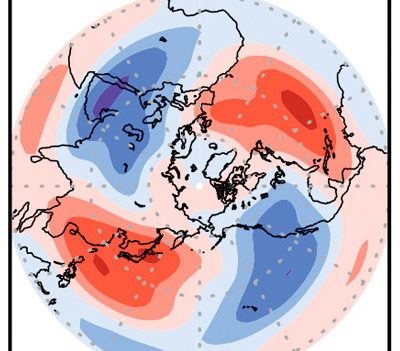Touching Tomorrow atPukyong National University
NEW BEGINNING, NEW INSPIRATION
PKNU Research 1000
| Moon Woo-Seok | What are the effects of the jet stream as the Arctic temperature rises? | |||
| WRITER | 대외협력과 | WRITE DAY | 2022-10-05 |
| COUNT | 401 | ||
| Moon Woo-Seok | What are the effects of the jet stream as the Arctic temperature rises? | |||||
 |
대외협력과 |  |
2022-10-05 |  |
401 |
“The arctic temperature rises may affect the jet stream pattern.”
Professor Moon Woo-Seok

Recently, as concerns about abnormal climates are growing around the world, a research result showing that the increase in temperature in the arctic affects the fluctuations of the jetstream is attracting academia attention.
Professor Moon Woo-Seok’s team at Pukyong National University (Environmental atmospheric sciences) conducted joint research with professor John Wettlaufer from Yale university, USA, and published a paper ‘Wavier jet streams driven by zonally asymmetric surface thermal forcing' containing the research results recently and announced that it was published in <PNAS> (Proceedings of the national academy of sciences of the United states), a world-renowned academic journal.
With the arctic warming four times faster than the global average, there has been growing interest in recent years about how the rapid rise in temperature in the arctic is related to the occurrence of abnormal climates.
Until now, controversy has continued, with the hypothesis that the mid-latitude jet stream may be shaken due to an increase in the Arctic temperature, and opposing studies suggesting that the role of the Arctic in the change of the mid-latitude jet stream may be limited. However, both claims lacked theoretical or experimental evidence.
In this study, prof. Moon's research team conducted computer experiments such as theoretical research and numerical simulations to present a theoretical basis for the first time in the academia.
Through the study, the research team proved that the intensity of the jet stream weakens as the arctic temperature rises, and that when the intensity falls below a certain value, large-scale wave phenomena that connect to the upper atmosphere can occur rather than a reaction limited to the surface of the earth.
The research team suggests that as the average velocity of the jet stream falls, the wave of the jet stream can become stronger as well.
Prof. Moon said, “The study clarifies that temperature changes in the Arctic are an important factor that can increase extreme weather events not only in the region but also globally, especially in the mid-latitudes where we live,” and he added, “Especially, it is necessary to simultaneously study changes in the Arctic in order to find out the extent of climate change in Korea located in the middle of the mid-latitudes and the severity of meteorological disasters. I also think that the role of the Polar Research Institute, which visits the polar regions every year to study the climate conditions of the Arctic, should be further strengthened.”

△ An image showing an increase in the arctic temperature and fluctuations in the jet stream.